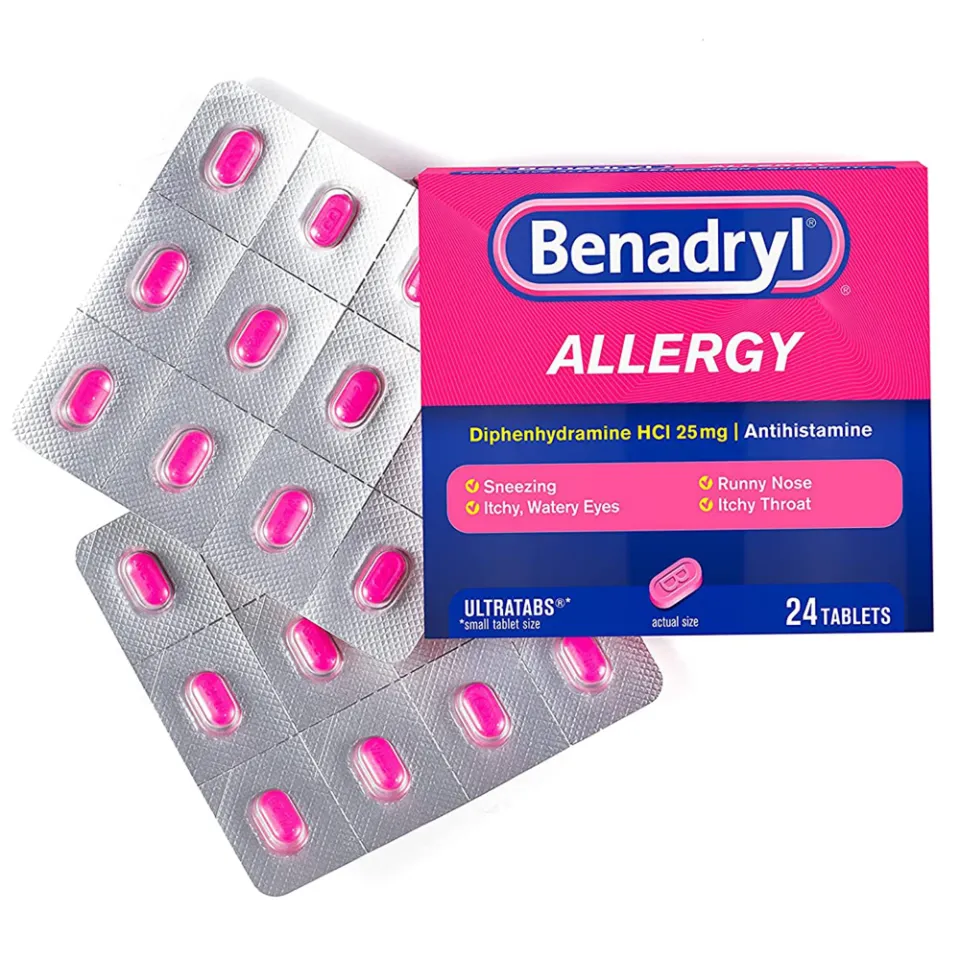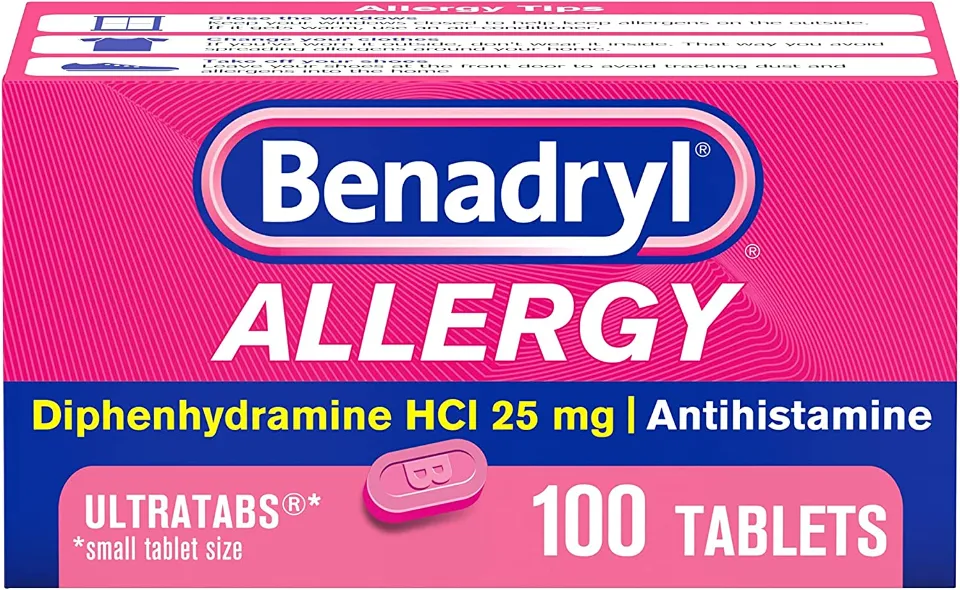Antihistamine Benadryl reduces allergy symptoms. It is referred to as a drowsy (sedative) antihistamine and is more likely than other antihistamines to induce sleep.
Normally, you’d take a 20-minute dose of Benadryl to aid in falling asleep. It usually takes about 30 minutes to work. The duration of the drug’s expected action is between 4 and 6 hours.
Read on to learn more about Benadryl.
What is Benadryl?
The brand-name drug Benadryl (Benadryl) is categorized as an antihistamine. It’s used to help relieve symptoms of hay fever (seasonal allergies), other allergies, and the common cold, as well as itchy skin due to insect bites, hives, and other causes.
Benadryl works well to relieve hives-related itchy skin. It’s frequently regarded as the first line of defense against hives. Benadryl isn’t frequently used for treating seasonal allergies, despite the fact that it works well for doing so. Side effects like sleepiness are to blame for this.
There are numerous variations of Benadryl available both with a prescription and without one. Some are applied topically to the skin while others are taken orally. Examples include:
- Oral tablets
- Oral liquid-filled capsules (liqui-gels)
- Oral chewable tablets
- Oral liquid solution
- Topical cream
- Topical gel
- Topical spray
- Topical stick
How Long is Benadryl Good For?
You typically take Benadryl 20 minutes before bed to aid in sleep. The average time for it to work is 30 minutes.
Your symptoms will typically start to get better in 20 minutes if you have a cough or cold. The medicine should work for around 4 to 6 hours.
If you purchased Benadryl or any medication containing Benadryl from a pharmacy, follow the directions on the packet or consult a pharmacist for advice.

Depending on the medication you purchase and the other medications it is mixed with, the instructions will change.
- Dosage for people over 65-Start with the lower dose if you’re over 65 because you might be more susceptible to experiencing side effects. The typical dosage is based on the Benadryl medication type and the reason you’re taking it.
- Dosage for short-term insomnia-Benadryl is available in 25 mg and 50 mg tablet form. 20 minutes before bedtime, you’ll typically take 50mg.
- Dosage for cough and cold symptoms-When treating cold and cough symptoms, Benadryl is sold in combinations with other medications. Both tablets and a liquid to be ingested are available. The typical dosage varies depending on the medication you’re taking. Check the instructions on the packaging carefully, or ask your doctor or pharmacist if you’re unsure.
- Dosage for hay fever and allergies-25 mg and 50 mg tablets of Benadryl are available. The usual dose is 25mg or 50mg, taken 3 or 4 times a day. Try to space your doses evenly throughout the day.
- Dosage for insect bites, stings and eczema-Benadryl is available as a cream that you apply once or twice daily. To create a thin layer, you only need a small quantity.
Benadryl Side Effects
Benadryl’s side effects can range from minor to severe. Some of the most common adverse reactions to taking Benadryl are listed below. Not every possible side effect is covered in this list.
Consult your doctor or pharmacist for more details on Benadryl’s potential side effects or advice on how to handle a bothersome side effect.
More Common Side Effects
The more common side effects of Benadryl include:
- Sleepiness
- Dry mouth
- Weakness
- Dizziness
- Headache
One or two weeks may pass before some of these side effects disappear. If they’re more severe or don’t go away, talk to your doctor or pharmacist.
Serious Side Effects
Call your doctor right away if you have serious side effects. If you believe you are experiencing a medical emergency or that your symptoms are life-threatening, dial 911. Serious side effects and their symptoms can include the following:
- Decreased memory
- Impaired thinking
- Dementia
- Confusion
- Fast heartbeat
- Seizures
Long-term Side Effects
It is not recommended to use over-the-counter Benadryl for an extended period of time. About the long-term effects of Benadryl, there is very little scientific study.
Some side effects that may occur with long-term use include:
- Constipation
- Blurred vision
- Memory problems and dementia (especially in seniors)
- Anxiety
- Dependence
Talk to your doctor about how often you have allergy symptoms. Benadryl may not be the safest or most effective drug for you if you experience symptoms frequently (more frequently than four days per week).
Cautions With Other Medicines
Some medicines can affect the way Benadryl works, and increase the chances of you having side effects. Check with your pharmacist or doctor if you’re taking:
- Antidepressants, such as venlafaxine or a monoamine oxidase inhibitor such as phenelzine
- Metoprolol, a heart medicine
- Any medicine that makes you drowsy, gives you a dry mouth, or makes it difficult for you to pee – taking Benadryl might make these side effects worse
You should carefully review the other ingredients in any cough, cold, or painkiller that contains Benadryl. For instance, see if it includes paracetamol. Before combining this medication with any other painkillers or medications, seek advice from your pharmacist.
Conclusion
The overall duration of the Benadryl effect is between four and six hours, beginning within twenty minutes. Please pay attention to the person taking the medication, different people need different doses.
Related Posts
- How Long Does Soma Stay in Your System? (2023)
- How Long is Flexeril in Your System? (2023)
- How Long is Sudafed in Your System? (Solved)
- How Long Do Sleeping Pills Stay in Your System?
- How Long Does Diphenhydramine Stay in Your System?
- How Long Does Eliquis Stay in Your System?
- How Long is Benadryl Good For? (Solved)










